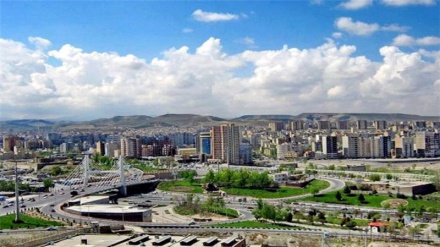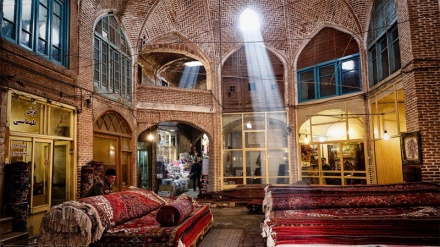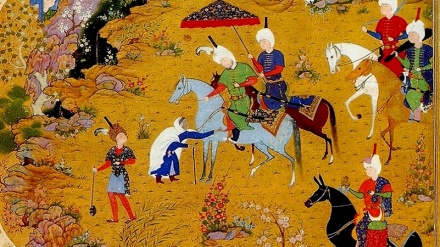Tabriz, 2018 (18)
Welcome to this week's episode of the series "Tabriz, 2018". Tabriz is the hub of sciences, awareness, art, culture, and history; and the utmost efforts of notable figures in scientific fields has turned this city into a major pole in Iran and the World of Islam.
Titles such as the father of Iran's modern surgeries; father of Iran's numismatics; father of Iran's geography; father of Iran's polymer chemistry, and father of the science of genetics in Iran, are some of the titles that the scientists of this city have earned in the scientific realms. Today, we introduce three major figures of this city in the field of education.
Mirza Jabbar Asgarzadeh, popularly known as "Jabbar Baghcheban", was born in the year 1885 AD, in the city of Yerevan, which is the current capital of the Republic of Armenia. However, his family were originally from the city of Tabriz. He founded the first Iranian kindergarten in the year 1924 AD in Tabriz. In this kindergarten, he single-handedly prepared toys and handicrafts for children; and eagerly aimed for boosting these children's potentials.
Gradually, he began to teach deaf children, starting his activities in this domain by teaching three deaf boys. He maintained no previous experience in this field, and had no access to related books and articles. However, in the light of his personal experience, he came to realize the important role of eyesight, and sense of touch in teaching the language to deaf children. He also prepared new games, handicrafts, and decorations for these children. In fact, upon founding this school, he officially began to teach deaf and dumb children.
Later on, he thought of invention of a device, with the usage of which deaf children would be able to hear sounds and voices. Hence, he invented a device, enabling deaf children to hear sounds and voices. The said device was registered as an invention after its completion in the year 1932.
He later established the support group for deaf and dumb children and began to publish a magazine, presenting his teaching method to primary school teachers.
Throughout his fruitful life, Jabbar Baghcheban rendered valuable services to the culture and literature for deaf and dumb children, and left valuable works and compilations behind; each of which are a manifestation of his profound admiration for the Iranian culture, such as instructions on teaching the alphabet; self-taught alphabet for the elderly; mysteries of education; Baghcheban alphabet; the method for teaching deaf and dumb children; and the pearl tree.
One of his signature books was selected as one of the best books for children by the global council for children's books.
Publication of comical books; presentation of a new approach for teaching alphabet; foundation of theatrical literature for children; education of deaf and dumb children; establishment of the first Iranian kindergarten in Shiraz; compilation of the first especial playwright for Iranian children; foundation of education of deaf children in Iran; verbal approach in education of deaf children; and education of mindful calculation method to deaf children are some of the most important scientific innovations of Jabbar Baghcheban.
This prominent Iranian figure passed away in the year 1966 AD, and was laid to rest in Tehran.
Mirza Hassan Tabrizi, popularly known as Roshdiyeh, was born in the city of Tabriz in the year 1851 AD. He was the son of one of the prominent Ulema of that city, named Mollah Haadi. He completed his preliminary studies under the supervision of his father, while later acquiring modern sciences. Later on, he traveled to several countries in order to further his studies in the course of education. He established the first modern school in Tabriz in the year 1887. However, upon the growth and development of this school, a wave of oppositions to Mirza Hassan emerged. His opponents were mainly those who believed in the traditional approach to education, whose businesses had experienced a downward spiral upon the adoption of the modern approach to education. They made strenuous efforts, persuading one of the Ulema of Tabriz to issue a Fatwa for destruction of this modern school. Thereafter, vandals raided and demolished this school.
Under immense pressure, Roshdiyeh was forced to change the location of this school in Tabriz, three times. Whenever the oppositions to his modern approach to education intensified, he closed the school temporarily, stayed in Mashhad, while later returning to Tabriz, and re-opening his school. He stayed the course despite of the threats leveled against him. His progress was to an extent that he even established classes for education of adults, teaching them the alphabet and how to read and write in ninety hours.
Mirza Ali Khan Amin Ud-Dowleh, upon instatement as the ruler of Azarbaijan, supported Roshdiyeh, and paved the ground for him to establish a large primary school in Tabriz. Thanks to Amin Ud-Dowleh's unwavering support for Roshdiyeh, the latter provided uniforms for, and taught sixty pupils.
Upon the instatement of Amin Ud-Dowleh to the post of premiership in the year 1888 AD, Rushdiyeh was summoned to Tehran, founding Roshdiyeh Schools in the Iranian Capital.
In the waning years of his life, Roshdiyeh migrated to the holy city of Qom, passing away in that city.
The Iranian thinker, poet, and mathematician, Professor Mohsen Hashtroudi, was one of the notable figures of Tabriz, whose life spanned from 1907 to 1976. He completed his preliminary studies in Tabriz, going on further education in Tehran. He learned medicine for a number of years, however, ultimately he was sent to France as a student of mathematics, on a state scholarship. He received his B.Sc. in mathematics from Sorbonne University. Later on, he researched at the same university on differential geometry, receiving his PhD in mathematics. Upon returning to Iran, he was instated as an assistant professor, while later being appointed as the chancellor of Tabriz University.
He highly excelled in expressing scientific principles and phenomena, in addition to modern technologies in simple language, establishing a strong bond with a large section of the community with his writings and keynote remarks; and succeeding in conveying the main concepts of science and technology to them. He was also highly interested in philosophy, poetry, and music, while composing a number of poems.
He was one of the forerunners of critical thinking in Iran. He put emphasis on basic sciences, while believing that philosophy, arts, and mysticisms played complementary roles to sciences. His expertise was in the field of differential geometry. His most important scientific work is his PhD thesis on differential geometry. He also maintained a photographic memory.
Hashtroudi attached significant importance to discipline.
MR/ME


